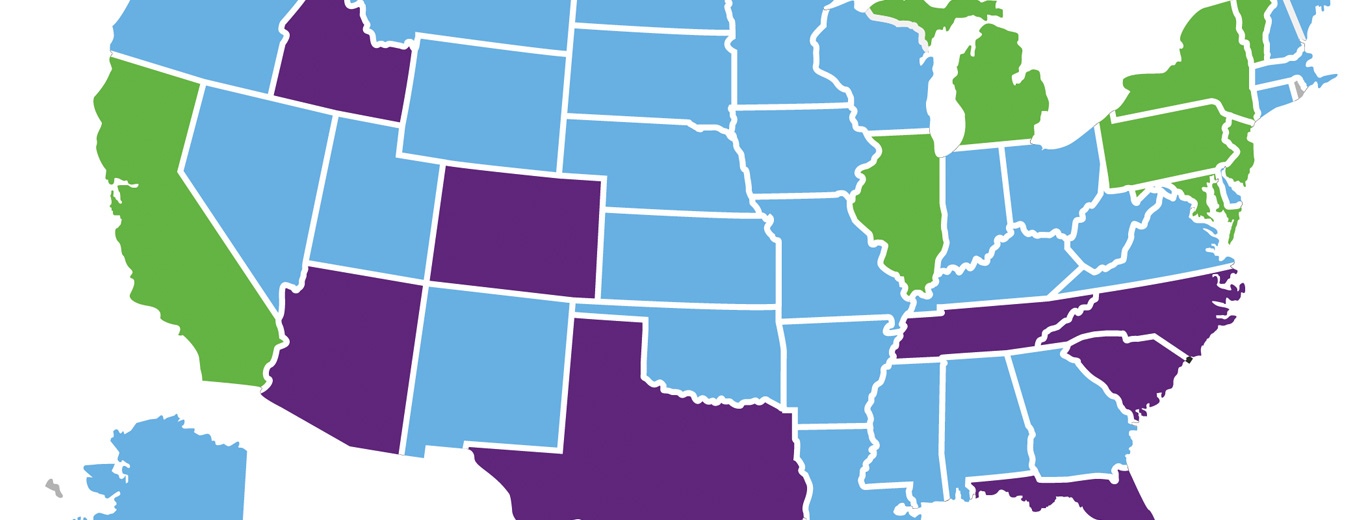Where are Americans moving?
Moving company North American Van Lines has updated its Migration Report and interactive migration map, which displays data on where Americans have moved over the years.
According to the US Census Bureau, the percentage of people that move every year equates to 14 per cent of the population (roughly 40 million individuals). People move for many reasons – housing, jobs and family.
Being aware of cross-country migration patterns can help to build a more complete picture of the behaviour of Americans. The map [right] shows the states with the largest influx of moves and the states that have the most outbound moves.
Key points from the 2018 Migration Report include:
- ldaho has regained its position as the leader in inbound moves for 2018. It has come first three times out of the last four years, after falling to second place in 2017
- llinois topped the outbound moves list for the fourth time since 2014
- For the past five years, the states with the highest move totals haven’t changed. They are: Florida, California and Texas
- Maryland made its debut in the top five outbound states
North-eastern states: until this year, Connecticut has consistently been in the top eight of outbound moves since 2013. It was first in 2013 and second in 2017 - Southern states: South Carolina was in the top three of inbound moves starting in 2011, then started to slip from 2016
- Mid-western states: Illinois has consistently been in the top three positions of outbound moves since 2013, getting the top position four times
- Western states: in 2013 and 2014, Idaho wasn’t in the top inbound states. Then in 2015 it was first. It remained top in 2016 and slipped to second in 2017. Based on the most recent census data, Idaho is currently the nation’s fastest-growing state, with its population increasing 2.2 per cent between July 2016 and July 2017.
Block exemption should not be renewed, says GSF
The Global Shippers Forum (GSF), the voice of shippers importing and exporting goods around the world, has called on the European Commission to revoke and replace the Consortia Block Exemption Regulation (BER). The BER will expire in April 2020 and the EC is now evaluating its impact and relevance to determine whether it should be prolonged and, if so, under what conditions.James Hookham, GSF
Secretary General, said: ‘GSF has joined the worldwide shipping community in calling for the European Commission to not renew the BER. GSF has recommended these special privileges should come to an end and the liner shipping industry should begin the transition to normal competition conditions. ‘There is, potentially, scope for the existing legal instruments to be replaced by modified or augmented arrangements, but only where the impact of this transition could cause unnecessary disruptions.’
The BER allows shipping lines with a combined market share of below 30 per cent to enter into cooperation agreements, or to supply joint cargo transport services, justified on the basis that this would facilitate improvements in productivity and service levels.
The European Commission is currently determining whether to extend the BER for a further five-year period from April 2020.


